Bitterroot National Forest
- January 30, 2024
- 0 comment
Discover the beauty of Bitterroot National Forest, spanning Montana and Idaho, with its breathtaking landscapes and diverse wildlife. Located between Montana and Idaho, the Bitterroot National Forest is a jewel of the American wilderness. Spanning across a vast landscape, this forest is a tapestry of breathtaking views and a symphony of nature’s unspoiled beauty. Home to a diverse array of wildlife and a plethora of natural wonders, the forest invites adventurers, nature enthusiasts, and peace-seekers alike.
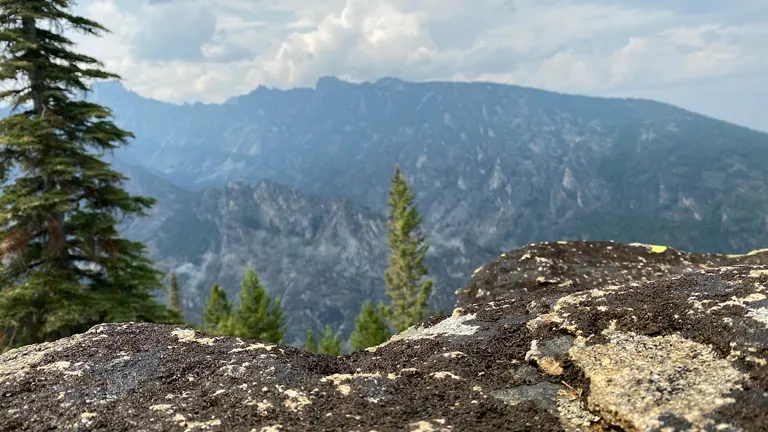
From the towering peaks that etch the skyline to the serene valleys that cradle life, Bitterroot National Forest is a haven of ecological diversity and scenic grandeur. Whether you are drawn by the call of the wild or seeking a tranquil escape from the bustle of modern life, this forest offers an unparalleled experience that captivates the heart and rejuvenates the soul.
Characterizing Features of Bitterroot National Forest
- Majestic Mountain Ranges: Dominating the landscape of Bitterroot National Forest are the Bitterroot and Sapphire Mountains. These ranges are not only a breathtaking sight but also a geological wonder, comprising ancient rocks sculpted by time. Hikers and climbers find these mountains a challenging and rewarding terrain, with the highest peak, Trapper Peak, offering a particularly notable ascent.
- Diverse River Systems: The forest is crisscrossed by a network of rivers and streams, including the prominent Bitterroot and Selway Rivers. These waterways are vital ecological corridors, supporting a rich array of aquatic life. They are also a hub for recreational activities, notably fly fishing, which draws enthusiasts from all over due to the abundance of trout.
- Expansive Wilderness Areas: Bitterroot National Forest is renowned for its vast wilderness areas, including the Selway-Bitterroot Wilderness. These areas offer a glimpse into pristine environments, largely untouched by human development. They are crucial habitats for wildlife and provide a sanctuary for those seeking solitude and an unfiltered experience with nature.
- Historic Fire Lookouts: Scattered throughout the forest are historic fire lookouts, remnants of a bygone era of forest fire management. Many of these lookouts, such as the one on St. Mary Peak, have been restored and are accessible to visitors. They offer a unique perspective on the forest and its history, as well as panoramic views of the surrounding landscape.
- Varied Recreational Trails: The forest boasts an extensive trail system, accommodating a range of activities from hiking and horseback riding to mountain biking and cross-country skiing. These trails, such as the popular Blodgett Canyon Trail, wind through diverse terrains, offering visitors a chance to explore the forest’s varied ecosystems.
- Rich Cultural History: Bitterroot National Forest is not just a natural wonder but also a landscape steeped in cultural history. It’s home to sites significant to the Native American tribes of the region, as well as historical remnants of early European settlers and loggers. This cultural tapestry adds a layer of depth to the visitor experience, connecting them to the past inhabitants of the land.
History of Bitterroot National Forest
The origins of Bitterroot National Forest are deeply rooted in the environmental and conservation movements of the late 19th and early 20th centuries. Officially established in 1898, the forest was part of a broader national effort to preserve and manage public land resources in the wake of rapid industrialization and expansion in the United States. This era marked a significant shift in public policy, recognizing the importance of conserving natural landscapes for future generations. The forest’s early years were focused on implementing sustainable land management practices, a response to the widespread exploitation of timber and mineral resources. These efforts laid the groundwork for modern conservation principles and demonstrated a growing public awareness of environmental stewardship.

As the 20th century progressed, Bitterroot National Forest became a focal point for evolving ideas about land use and ecology. The forest was significantly impacted by the 1910 “Big Blowup,” a massive wildfire that swept through millions of acres in the Northern Rockies, profoundly influencing fire management policies and practices in the region. The mid-20th century brought further changes, with an increasing emphasis on balancing recreational use with ecological conservation. This period saw the expansion of recreational facilities and the designation of wilderness areas within the forest, reflecting a growing public desire for outdoor leisure activities and the recognition of the intrinsic value of wilderness. Today, Bitterroot National Forest stands as a testament to these historical shifts, embodying the ideals of both preservation and responsible enjoyment of natural resources.
Unique Ecosystem of Bitterroot National Forest
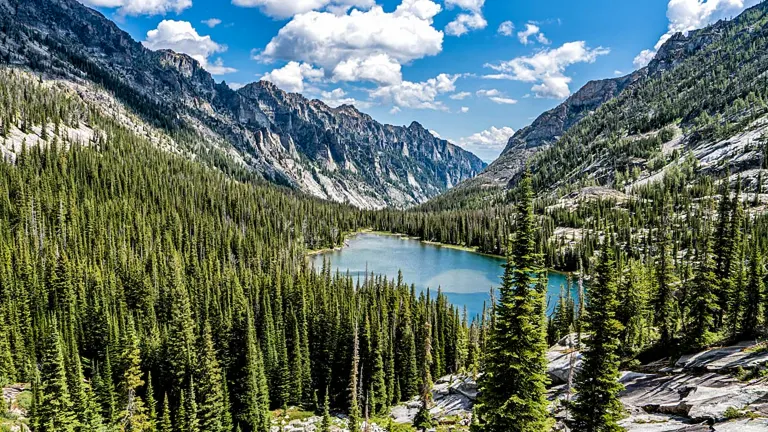
The Bitterroot National Forest is a vibrant mosaic of ecosystems, uniquely positioned at the juncture of the Northern Rockies. Its diverse landscape ranges from rugged peaks to lush valleys, creating distinct ecological niches. This variety fosters a rich biodiversity: towering conifers like Western Larch and Engelmann Spruce provide shelter for species such as the elusive lynx and the black bear. The forest’s myriad streams and rivers, including the namesake Bitterroot River, are lifelines for aquatic species, notably the native cutthroat trout. The interplay between different altitudes and climates within the forest supports a wide range of vegetation zones, from dry, lower-elevation forests to moist, high-altitude cedar groves. This ecological diversity not only makes the forest a critical habitat for wildlife but also a significant natural area for studying environmental dynamics and conservation biology.
Location of Bitterroot National Forest
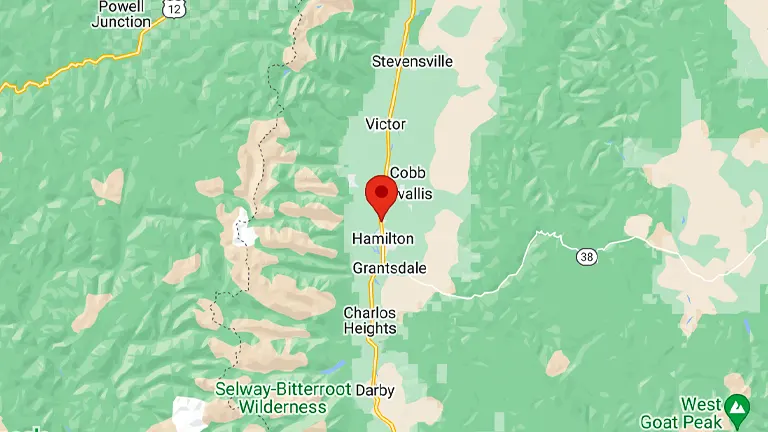
The Bitterroot National Forest is prominently situated in the Northern Rocky Mountains, straddling the border between Montana and Idaho in the United States. Encompassing over 1.5 million acres, the forest stretches from the Idaho border eastward into Montana, encompassing a significant portion of the Bitterroot Valley and the Sapphire and Bitterroot mountain ranges. Its geographical positioning places it at a notable crossroads of diverse ecological zones, contributing to the forest’s varied terrain and climate conditions. This strategic location not only defines its unique environmental attributes but also makes it easily accessible from major towns and cities in the region, including Missoula in Montana and Salmon in Idaho. As a result, Bitterroot National Forest serves as a crucial natural and recreational resource for the surrounding communities, as well as a destination for visitors from across the globe seeking its natural beauty and wilderness experiences.
Here’s a list of specific guides on how to reach Bitterroot National Forest:
1. From Missoula, Montana:
- Take US Highway 93 South for approximately 45 miles.
- This route leads directly into the northern part of the forest, with access to various trailheads and recreational areas.
2. From Salmon, Idaho:
- Head north on US Highway 93 for about 45 miles crossing the Idaho-Montana border.
- This route provides access to the western portions of the forest.
3. Via Hamilton, Montana (Central Access):
- Hamilton serves as a central hub for accessing the forest.
- From Hamilton, you can take State Highway 38 (Skalkaho Highway) for eastern access or continue on US Highway 93 for central and southern parts of the forest.
4. From Interstate 90 (Northern Access):
- If traveling from the east or west on I-90, take the exit for US Highway 93 South at Missoula.
- This route is ideal for those coming from farther away or from out of state.
5. Accessing Remote Areas:
- For more remote areas, such as the Selway-Bitterroot Wilderness, it’s recommended to use a 4WD vehicle.
- Local forest service maps and GPS should be used for navigating these less-developed roads.
6. Public Transportation Options:
- There are limited public transportation options directly to the forest.
- The nearest major airport is in Missoula, Montana, from where you can rent a car for the drive to the forest.
7. Seasonal Considerations:
- Some roads and passes, like the Skalkaho Pass, may be closed during winter months due to snow.
- Always check current road conditions and weather forecasts before planning your trip.
The Importance of Conservation and Recreation in Bitterroot National Forest
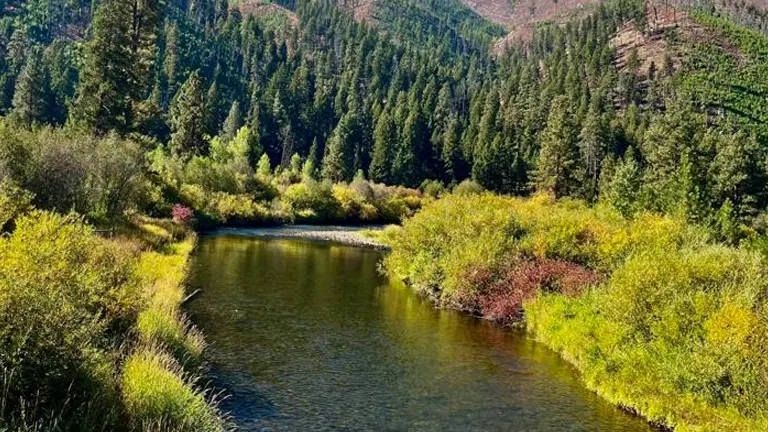
The Bitterroot National Forest exemplifies the harmonious balance between conservation and recreation. Efforts in habitat restoration and wildfire management are key to preserving its diverse ecosystems and wildlife. Simultaneously, the forest’s recreational offerings, from hiking to wildlife viewing, foster an appreciation for nature and environmental stewardship. This blend of conservation and recreation showcases a model for sustainable natural resource management, benefiting both the environment and its visitors.
Diverse Vegetation and Plant Species in Bitterroot National Forest
- Ponderosa Pine (Pinus ponderosa): Dominant in dry, lower elevations, Ponderosa Pines are iconic with their tall, straight trunks and distinctive bark. They create critical habitats for various wildlife and are integral to the forest’s fire ecology.
- Douglas Fir (Pseudotsuga menziesii): Found in moist, mid-elevations, Douglas Firs are towering conifers known for their thick bark and conical shape. They play a crucial role in providing shelter for wildlife and contribute significantly to the timber industry.
- Western Larch (Larix occidentalis): Unusual among conifers, Western Larches are deciduous, losing their needles in the fall. They thrive in higher elevations and their autumnal gold color adds a unique aesthetic to the forest landscape.
- Engelmann Spruce (Picea engelmannii): Located primarily in higher, cooler, and wetter areas, Engelmann Spruces are important for maintaining the forest’s biodiversity. They provide habitat for species like the Northern Goshawk and contribute to the forest’s dense canopy.
- Western Red Cedar (Thuja plicata): Although less common, these cedars are found in moist areas of the forest. They are known for their longevity and rot-resistant wood, playing a significant role in the forest’s ecosystem by providing habitat and stabilizing riverbanks.
- Huckleberries (Vaccinium): These understory shrubs are not only a favorite food source for wildlife but also a popular foraging item for humans. Huckleberries thrive in various forest environments, from open areas to dense woods.
- Wildflowers (Various Species): In spring and summer, the forest floor is blanketed with an array of wildflowers, including Indian Paintbrush (Castilleja), Lupine (Lupinus), and Beargrass (Xerophyllum tenax). These flowers add vibrant colors to the landscape and are vital for pollinators.
- Riparian Vegetation: Along rivers and streams, riparian vegetation like Cottonwood (Populus) and Willow (Salix) is critical for preventing soil erosion, providing wildlife habitat, and maintaining water quality in the forest’s aquatic ecosystems.
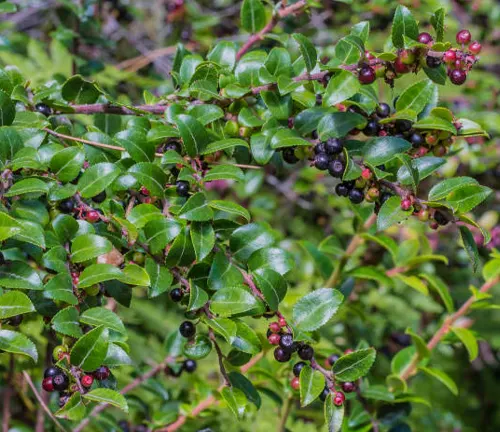
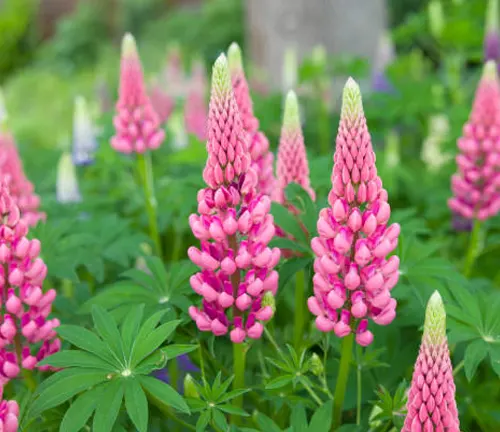
Fauna in Bitterroot National Forest
- Grizzly Bear (Ursus arctos horribilis): These iconic symbols of the wilderness, though rarely seen, play a crucial role in the ecosystem as apex predators. Their presence in the forest is a sign of a healthy, intact ecosystem.
- Elk (Cervus canadensis): Frequently spotted in meadows and open areas, elk are vital to the forest’s biodiversity. They are a key species for predator-prey dynamics and contribute to the ecological balance.
- Mountain Lion (Puma concolor): Also known as cougars, these elusive predators are essential for controlling deer and other prey populations. Their solitary nature makes sightings rare but they are a significant part of the forest’s fauna.
- Bald Eagle (Haliaeetus leucocephalus): A symbol of American wildlife, the bald eagle can often be seen soaring above rivers or perched in tall trees. They are indicative of the forest’s healthy aquatic ecosystems.
- Boreal Toad (Anaxyrus boreas): These toads are a vital indicator species for environmental health, particularly in aquatic ecosystems. They are often found in the forest’s wetlands and moist areas.
- Black-backed Woodpecker (Picoides arcticus): Specializing in feeding on insects in burned wood, this woodpecker plays a unique role in post-fire forest ecosystems. Their presence is crucial for the recovery of forests after fires.
- Wolverine (Gulo gulo): Rare and elusive, wolverines are a testament to the remote and wild nature of the forest. They require large territories and are indicators of vast, unfragmented wilderness areas.
- Cutthroat Trout (Oncorhynchus clarkii): Native to the forest’s rivers and streams, these trout are not only important for the aquatic food web but also a favorite target for anglers, symbolizing the forest’s recreational and ecological value.
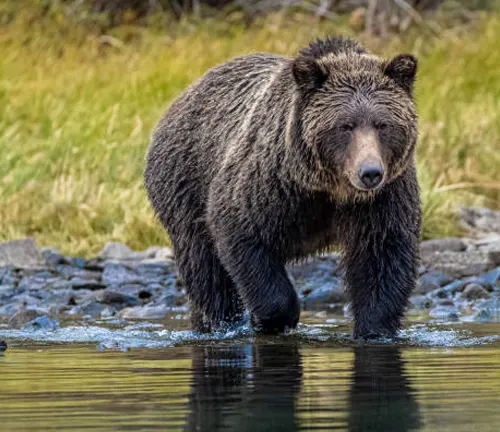
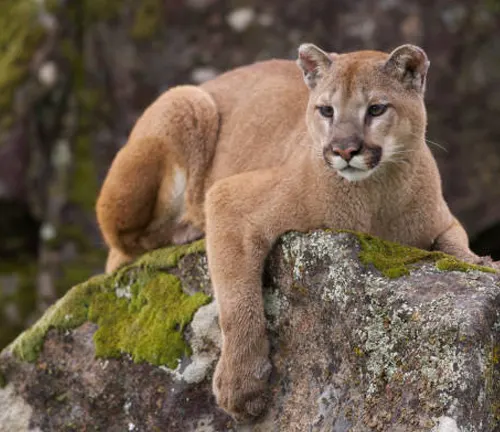
Attractions in Bitterroot National Forest
Trapper Peak: As the highest peak in the Bitterroot Mountains, Trapper Peak offers an exhilarating challenge for hikers and climbers. The summit provides a stunning panoramic view of the entire Bitterroot Valley and the surrounding wilderness, making it a must-visit for those seeking both adventure and natural beauty. The trail to the top, while demanding, rewards visitors with breathtaking scenery and a sense of accomplishment.
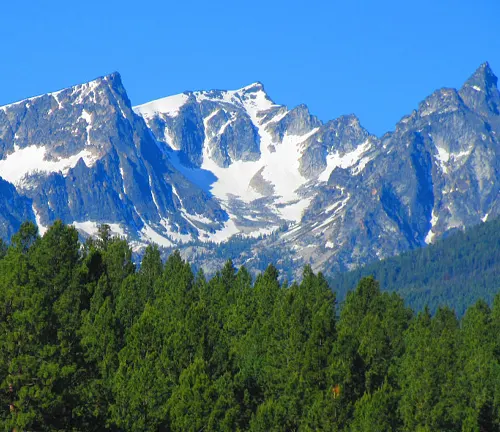
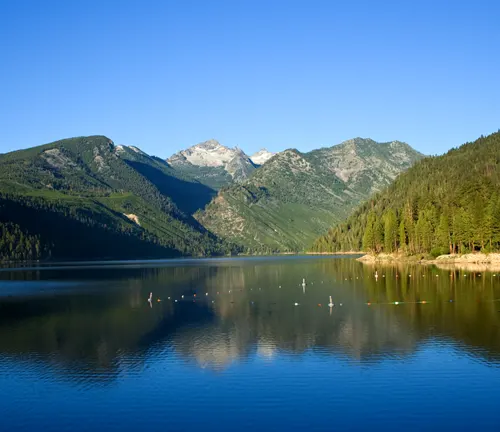
Lake Como: Located in the heart of the forest, Lake Como is a picturesque destination popular for its crystal-clear waters and scenic surroundings. Ideal for boating, swimming, and fishing, the lake also features a well-maintained trail that circles its perimeter, perfect for hikers and nature lovers. The lake’s accessibility and family-friendly atmosphere make it a favorite for both locals and tourists.
Blodgett Canyon Overlook: Blodgett Canyon Overlook offers an easily accessible viewpoint with awe-inspiring views of the canyon’s rugged cliffs and distant peaks. The overlook is a perfect spot for photography enthusiasts and those looking to enjoy the majestic beauty of the forest without a strenuous hike. The area’s natural acoustics also make it a unique location for listening to the sounds of nature.
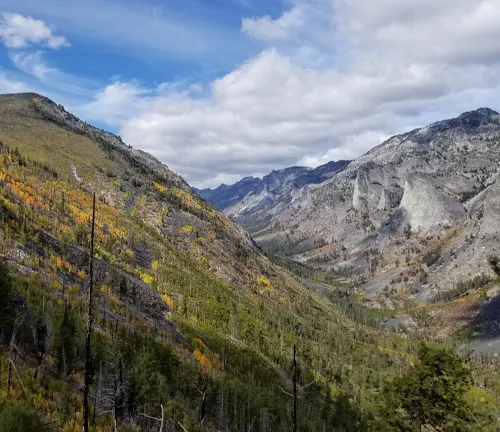
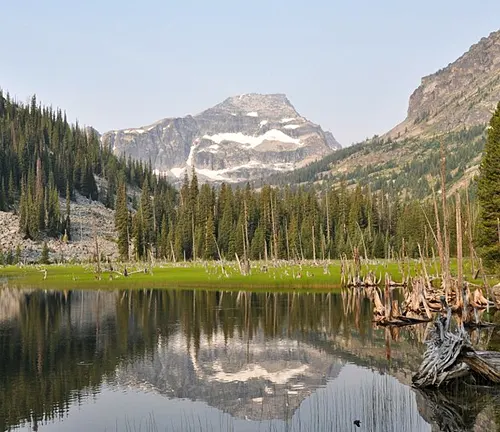
Selway-Bitterroot Wilderness: As one of the largest designated wilderness areas in the United States, the Selway-Bitterroot Wilderness is a haven for those seeking a true backcountry experience. This area is known for its unspoiled natural beauty, abundant wildlife, and opportunities for solitude. Hiking, camping, and wildlife watching in this undisturbed environment offer a chance to disconnect and immerse in pristine wilderness.
Skalkaho Pass: Skalkaho Pass is a scenic drive that showcases the diverse landscapes of the forest. This route, primarily a gravel road, winds through mountainous terrain, offering views of waterfalls, rugged peaks, and lush valleys. The drive is particularly popular in the fall when the changing colors of the forest foliage provide a spectacular display.
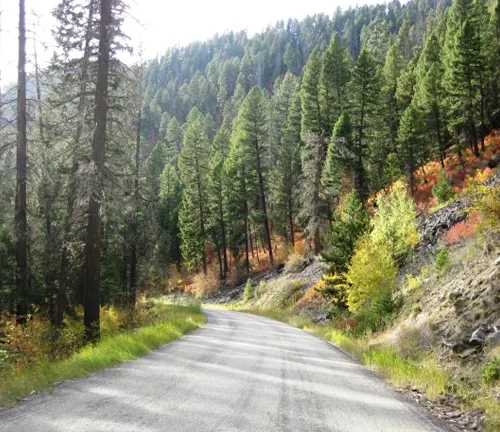
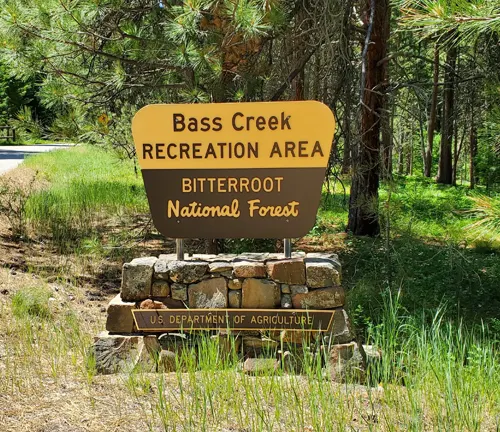
Bass Creek Recreation Area: The Bass Creek Recreation Area is a versatile spot that caters to a wide range of outdoor activities. With trails for hiking and horseback riding, as well as spots for fishing and picnicking, it’s a great location for a day trip. The area’s diverse ecosystems make it an excellent place for wildlife observation and enjoying the tranquility of the forest.
Recreational Activities in Bitterroot National Forest
- Hiking: Bitterroot National Forest offers a network of trails catering to all skill levels, from leisurely walks to challenging mountain treks. Popular trails like the Blodgett Canyon and Canyon Creek Trails provide opportunities to explore the forest’s diverse landscapes, from dense woodlands to alpine meadows. Hiking in this forest not only offers physical exercise but also a chance to witness its rich biodiversity and breathtaking vistas.
- Fishing: The forest’s numerous streams and rivers, particularly the Bitterroot River, are renowned for fly fishing. Anglers can expect to find a variety of trout species, including rainbow, brown, and cutthroat trout. The clear, cold waters and the abundance of fish make it a premier destination for both novice and experienced fishermen seeking a serene and rewarding fishing experience.
- Camping: With its wide array of campgrounds, Bitterroot National Forest is ideal for both backcountry and developed camping. Campsites like Lake Como and Charles Waters offer amenities for families and groups, while numerous backcountry sites provide a more rugged and intimate encounter with nature. Camping here allows visitors to fully immerse themselves in the tranquility and beauty of the wilderness.
- Wildlife Watching: The forest’s diverse habitats are home to an array of wildlife, making it a fantastic location for wildlife enthusiasts. From birdwatching to spotting larger mammals like elk and deer, visitors have numerous opportunities to observe wildlife in their natural settings. The best times for wildlife watching are often early morning or late evening when animals are most active.
- Mountain Biking: For those seeking an adrenaline rush, mountain biking trails in Bitterroot National Forest provide a thrilling experience. Trails of varying difficulty, such as those in the Bass Creek area, offer bikers a chance to navigate through different terrains, from challenging climbs to scenic flat stretches. Mountain biking in the forest combines physical challenge with the opportunity to enjoy its scenic beauty.
- Horseback Riding: Horseback riding is a unique way to explore the forest, offering a different perspective of its landscapes. Many trails are open to equestrians, allowing riders to traverse remote areas of the forest. This activity offers a peaceful and traditional method of experiencing the natural splendor of Bitterroot National Forest.
- Winter Sports: In winter, the forest transforms into a playground for snow sports. Activities like cross-country skiing, snowshoeing, and snowmobiling are popular. The forest’s terrain provides a picturesque and diverse backdrop for winter sports enthusiasts looking for both adventure and beauty in the snowy season.
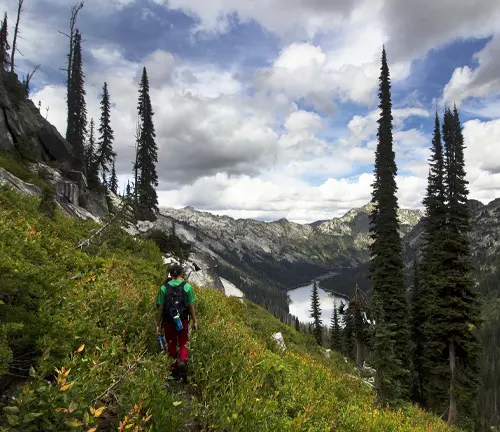
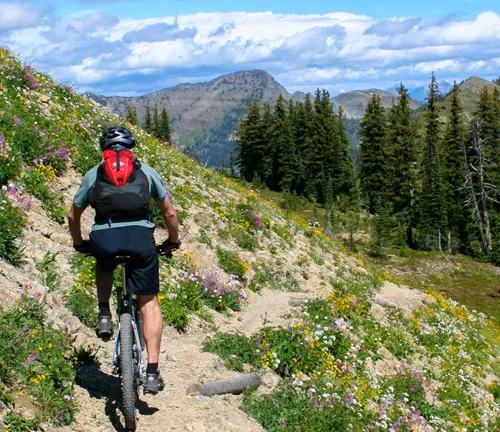
Different Facilities and Amenities in Bitterroot National Forest
- Campgrounds: Bitterroot National Forest offers a range of campgrounds, catering to various preferences. Developed campgrounds like Lake Como and Charles Waters are equipped with amenities such as picnic tables, fire rings, and restroom facilities, ideal for families and less experienced campers. For those seeking a more rugged experience, numerous backcountry sites provide a primitive camping experience, allowing visitors to truly connect with nature.
- Hiking Trailheads: The forest boasts numerous trailheads, serving as gateways to its extensive trail network. These trailheads, such as those at Blodgett Canyon and Bass Creek, often feature parking areas, informational kiosks, and sometimes restroom facilities. They are the starting points for adventures into the forest, providing access to its diverse landscapes and natural beauty.
- Visitor Centers: Visitor centers, such as the one in Darby, offer a wealth of information about the forest. These centers provide educational displays, maps, brochures, and knowledgeable staff to help visitors plan their activities. They are an invaluable resource for learning about the forest’s ecology, history, and the various recreational opportunities available.
- Picnic Areas: Scattered throughout the forest are designated picnic areas, perfect for a day out in nature. These areas, like those around Lake Como, often come with picnic tables, grills, and sometimes sheltered pavilions. They offer a comfortable setting for families and groups to enjoy meals surrounded by the forest’s scenic beauty.
- Boat Launches: For those interested in water activities, the forest provides several boat launches, such as the one at Painted Rocks State Park. These facilities allow for easy access to lakes and rivers, catering to boating, canoeing, and kayaking enthusiasts. The boat launches are strategically located to offer visitors a chance to explore the forest’s aquatic environments.
- Restroom Facilities: Many of the recreational areas within the forest, including major trailheads and campgrounds, are equipped with restroom facilities. These facilities range from simple pit toilets in remote areas to modern restrooms in developed sites, ensuring a comfortable and convenient outdoor experience for all visitors.
- Ranger Stations: Ranger stations in the forest, such as the one in Hamilton, are crucial for visitor safety and information. These stations are staffed with forest rangers who can provide up-to-date information on trail conditions, weather forecasts, and any potential hazards. They also play a key role in forest conservation and management efforts.
Tips and Advice for Visiting Bitterroot National Forest
- Check Weather Conditions: Before heading to the forest, it’s essential to check the local weather conditions. The weather in mountainous areas can be unpredictable, and being prepared for sudden changes is crucial for safety. Ensure you have appropriate clothing and gear for varying conditions, especially if you plan to hike or camp in higher elevations.
- Be Bear Aware: The forest is home to both black bears and grizzlies. It’s important to practice bear safety by carrying bear spray, making noise while hiking to avoid startling bears, and properly storing food and trash in bear-proof containers. Being bear aware helps protect both you and the wildlife.
- Leave No Trace: Follow Leave No Trace principles to minimize your impact on the environment. This includes packing out all trash, staying on designated trails, camping in designated areas, and avoiding disturbing wildlife or natural features. Preserving the forest’s natural beauty and ecosystems is a responsibility shared by all visitors.
- Stay Informed About Fire Restrictions: Wildfires are a natural part of the forest’s ecosystem, but they can pose risks. Stay informed about current fire restrictions and guidelines. During dry seasons, campfires may be prohibited in certain areas, so having alternative cooking methods is advisable.
- Plan Your Activities: Given the forest’s vast size and diverse offerings, planning your activities in advance can enhance your experience. Whether you’re interested in hiking, fishing, wildlife watching, or camping, researching trails, permits, and regulations beforehand will ensure a smoother trip.
- Respect Wildlife: While wildlife sightings can be exciting, it’s important to respect the animals and their habitat. Maintain a safe distance, and avoid feeding or attempting to approach wildlife. Observing animals in their natural behavior is a privilege that requires responsible behavior from visitors.
- Prepare for Remote Areas: Many parts of the forest are remote and do not have cell service. If you plan to explore these areas, be prepared with physical maps, sufficient supplies, and let someone know your itinerary. In remote areas, self-reliance and preparedness are key.
- Fishing Regulations: If you plan to fish, be sure to familiarize yourself with the local fishing regulations, including licenses, catch limits, and species restrictions. These regulations help maintain healthy fish populations and ensure a sustainable future for the forest’s aquatic ecosystems.
Recommendation
If you’re seeking an escape into the wilderness, Bitterroot National Forest is a destination you shouldn’t miss. Its stunning landscapes, from the majestic mountains to the serene rivers, offer a perfect backdrop for a myriad of outdoor activities. Whether you’re an avid hiker, a wildlife enthusiast, or simply someone who appreciates the tranquility of nature, this forest has something special for you. The blend of its natural beauty and the opportunity for adventure makes it an ideal spot for both families and solo travelers. I highly recommend a visit to Bitterroot National Forest – it’s an experience that will leave you rejuvenated and in awe of the splendor of the natural world.
Conclusion
Bitterroot National Forest is a natural gem, offering breathtaking landscapes, diverse wildlife, and a range of outdoor activities. Its blend of majestic mountains, tranquil waters, and rich history makes it a haven for adventurers and nature lovers alike. Embodying the spirit of conservation and recreation, this forest is not just a destination but a portal to experiencing the raw beauty of the natural world.
FAQs
- What is the best time of year to visit Bitterroot National Forest?
The ideal time to visit is late spring through early fall. Summer offers the best conditions for hiking and camping, while fall brings stunning foliage. Winter visits are great for snow sports, though access to some areas may be limited due to snow. - Are there any entry fees for the forest?
There are no entry fees for Bitterroot National Forest itself. However, some campgrounds and special areas within the forest may charge fees for use or require permits. - Can I bring my dog to the forest?
Yes, dogs are allowed in Bitterroot National Forest. They must be kept on a leash in developed recreation areas and campgrounds. In backcountry areas, it’s recommended to keep dogs under control to protect wildlife and other visitors. - Is backcountry camping allowed in the forest?
Yes, backcountry camping is permitted. It’s important to follow Leave No Trace principles and be aware of any specific regulations in the area you choose to camp, such as fire restrictions or bear-proof food storage. - Are there guided tours available in the forest?
While the Forest Service does not typically offer guided tours, several private tour operators in the area offer guided hiking, fishing, and wildlife-watching tours. Check with local visitor centers for recommendations. - What should I do if I encounter wildlife?
If you encounter wildlife, keep a safe distance, do not feed the animals, and observe quietly. In case of a bear encounter, speak calmly and back away slowly. Do not run or make sudden movements. - Are there any areas of the forest that are wheelchair accessible?
Yes, Bitterroot National Forest has several wheelchair-accessible facilities, including certain trails, fishing platforms, and picnic areas. Check the forest’s website or contact a ranger station for specific information. - How can I learn about current trail conditions and closures?
The most current information about trail conditions and closures is available at local ranger stations or on the Bitterroot National Forest website. It’s also a good practice to check these resources shortly before your trip, as conditions can change rapidly.
In closing, Bitterroot National Forest is a remarkable treasure, offering a unique blend of natural beauty and outdoor adventure. Whether you’re there to explore its vast trails, witness its diverse wildlife, or simply bask in its serene landscapes, this forest promises an unforgettable experience. Venture into Bitterroot National Forest and discover the wonders of one of nature’s finest creations.


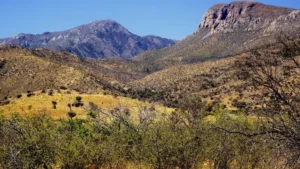
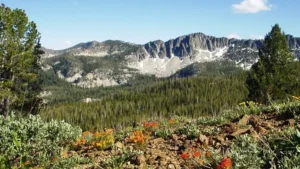
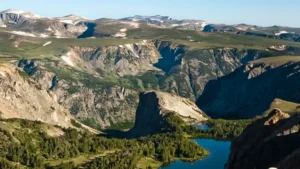
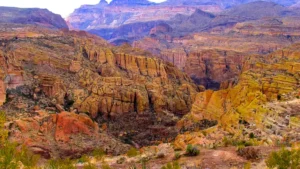

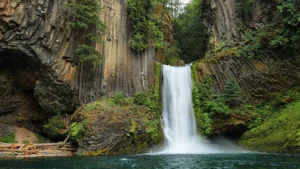

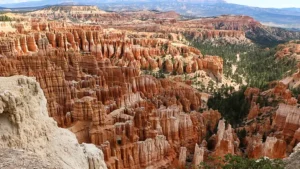
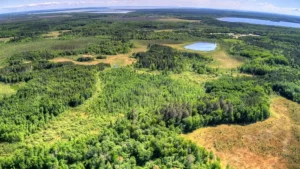
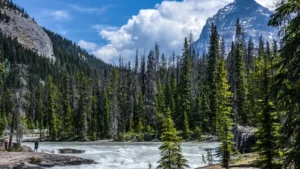
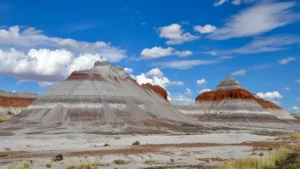
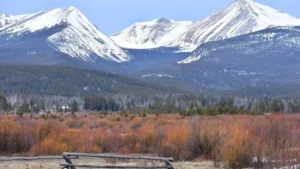
Leave your comment